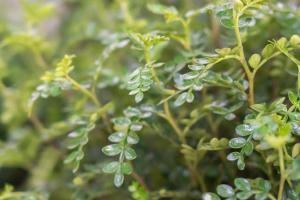How to Use Kelp Meal for Potted Plants
Kelp meal, also known as seaweed meal, is a natural and organic fertilizer that offers a wide range of benefits for potted plants. It is made from dried and ground seaweed and contains essential nutrients such as nitrogen, phosphorous, and potassium, as well as trace minerals, growth hormones, and vitamins. In this article, we will discuss how to use kelp meal for potted plants and help you to maximize its benefits.
1. Choosing the Right Kelp Meal
Before you start using kelp meal on your potted plants, it is important to choose the right type of kelp meal. There are different brands and types of kelp meal available, and it is important to choose the one that is best suited for your plants. Look for a kelp meal that is organic, sustainably sourced, and has a high nutrient content. You can also check the analysis on the label to see the nutrient content, and choose a kelp meal that has a balanced NPK (nitrogen, phosphorous, and potassium) ratio suitable for your plants.
2. Applying Kelp Meal to Potted Plants
Applying kelp meal to potted plants is simple and easy. You can either sprinkle the kelp meal around the base of the plant or mix it with the potting soil before planting. If you are using kelp meal as a top dressing, make sure that you do not apply it directly to the leaves or stem of the plant, as this can cause burning. You can also mix the kelp meal with water and use it as a foliar spray, which can help to improve the plant's nutrient uptake and overall health.
3. Benefits of Using Kelp Meal on Potted Plants
Kelp meal offers many benefits for potted plants. It helps to improve the soil structure, making it more porous and friable, and allowing better water and nutrient absorption. It also helps to increase the microbial activity in the soil, which aids in the breakdown of organic matter and the release of nutrients. Kelp meal is also a good source of natural growth hormones such as auxins and cytokinins, which can help to promote root growth, improve plant vigor, and increase yields. Additionally, kelp meal contains trace minerals and vitamins, which can help to improve the overall health and disease resistance of the plant.
4. Precautions When Using Kelp Meal
Although kelp meal is a natural and safe fertilizer, there are some precautions that you should take when using it on potted plants. First, avoid applying too much kelp meal, as this can lead to nutrient imbalances and burn the plant's roots. Follow the manufacturer's instructions for application rates and do not exceed the recommended dosage. Second, make sure that the kelp meal is fully composted before using it, as uncomposted kelp meal can release excess salts and harm the plant. Finally, if your potted plant is already receiving regular fertilization, you may want to reduce the amount of kelp meal that you are using, as too much fertilizer can also harm the plant.
Conclusion
Kelp meal is an excellent natural fertilizer that can help to improve the health and growth of potted plants. It is easy to apply and offers a wide range of benefits, including improved soil structure, increased microbial activity, and natural growth hormones. When using kelp meal on potted plants, be sure to choose the right type of kelp meal, follow the manufacturer's instructions for application rates, and take precautions to avoid over-fertilizing the plant. With these tips, you can use kelp meal to help your potted plants thrive and grow to their full potential.

 how many times do yo...
how many times do yo... how many planted tre...
how many planted tre... how many pine trees ...
how many pine trees ... how many pecan trees...
how many pecan trees... how many plants comp...
how many plants comp... how many plants can ...
how many plants can ... how many plants and ...
how many plants and ... how many pepper plan...
how many pepper plan...
































